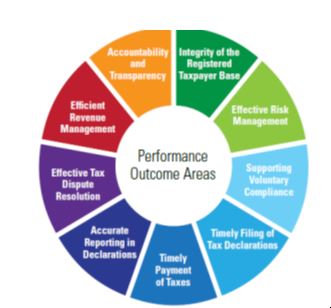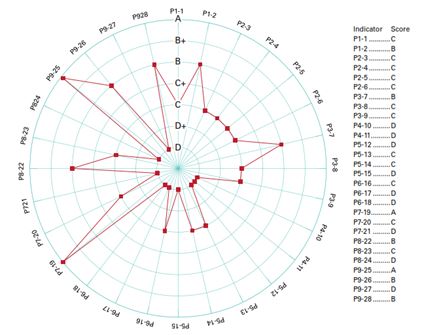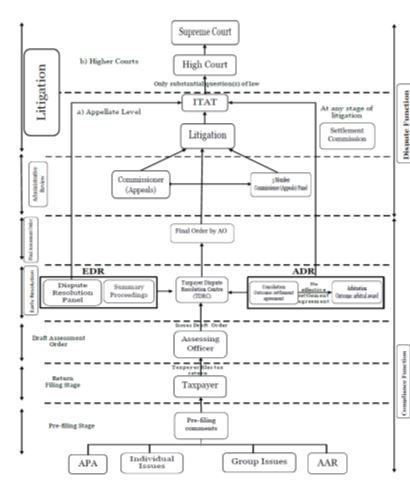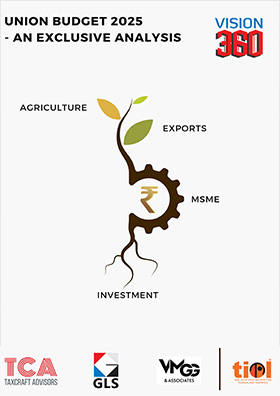Best Practices in Tax Administration: TADAT Model and Lessons for India
JUNE 15, 2023
By Pratap Singh, Principal CIT
 IT is widely believed that the main mission of the tax administration is to collect the tax revenue due from taxpayers, fairly and equitably, without hindering private sector development. It is said that the function of tax administration is not merely to raise revenue, but to enforce tax laws effectively and efficiently and to facilitate the tax payers to discharge their tax obligations with ease and at the least possible costs and to encourage voluntary compliance. In modern Tax Administration, the tax payers are treated as clients or customers and therefore the stress should be on tax education and awareness. Therefore, the job of tax administration is to make it easy for the honest taxpayers, while to enforce the compliance from tax evaders. The key functions of tax administration can be classified as per Figure 1.
IT is widely believed that the main mission of the tax administration is to collect the tax revenue due from taxpayers, fairly and equitably, without hindering private sector development. It is said that the function of tax administration is not merely to raise revenue, but to enforce tax laws effectively and efficiently and to facilitate the tax payers to discharge their tax obligations with ease and at the least possible costs and to encourage voluntary compliance. In modern Tax Administration, the tax payers are treated as clients or customers and therefore the stress should be on tax education and awareness. Therefore, the job of tax administration is to make it easy for the honest taxpayers, while to enforce the compliance from tax evaders. The key functions of tax administration can be classified as per Figure 1.
Figure 1: Functions of Tax Administration

1: TADAT Model
Tax Administration Diagnostic Assessment Tool (TADAT) is a new model developed by IMF and World Bank in the year 2013, with a view to evaluate the performance of a Tax Administration. The aim of TADAT is to provide standardized means of evaluating the robustness of important components of a country's tax administration and its level of maturity in the context of international good practices, such as:
- Identifying the relative strengths and weaknesses in tax-administration.
- Facilitating a shared view on the condition of the tax administration among all stakeholders (e.g., country authorities, international organizations, donor countries, and technical assistance providers).
- Setting the reform agenda, including reform objectives, priorities, initiatives, and implementation sequencing.
- Facilitating management and coordination of external support for reforms, and achieving faster and more efficient implementation.
- Monitoring and evaluating reform progress by way of repeat assessments each two to three years.
In fact, the TADAT is a global tool that can be used by any country to assess the relative strengths and weaknesses of its tax administration system. TADAT assesses the performance of a country's tax administration system by reference to nine outcome areas shown in the circular chart, Figure-1 . TADAT assessment is done on 28 different dimensions across nine performance areas as depicted in Table 1, critical to tax administration performance are linked to the performance outcome areas (POAs). It is these indicators that are scored and reported upon on a scale A to D. Each indicator has one to four measurement dimensions. TADAT assesses the relative strengths and weaknesses of a country's tax administration system by reference to each indicator; it does not attempt to assign a single overall performance rating for the administration.

Figure 2 : TADAT Model
Table 1: TADAT Model assessment
|
P1-1
|
Accurate and reliable taxpayer information.
|
|
P1-2.
|
Knowledge of the potential taxpayer base.
|
|
P2-3.
|
Identification, assessment, ranking and quantification of compliance risks.
|
|
P2-4.
|
Mitigation of risks through a compliance improvement plan.
|
|
P2-5.
|
Monitoring and evaluation of compliance risk mitigation activities.
|
|
P2-6.
|
Identification, assessment and mitigation of institutional risks.
|
|
P3-7.
|
Scope, currency and accessibility of information.
|
|
P3-8.
|
Scope of initiatives to reduce taxpayer compliance costs.
|
|
P3-9
|
Obtaining taxpayer feedback on products and services.
|
|
P4-10.
|
On-time filing rate
|
|
P4-11.
|
Use of electronic filing facilities
|
|
P5-12.
|
Use of electronic payment methods.
|
|
P5-13.
|
Use of efficient collection systems.
|
|
P5-14.
|
Timeliness of payments.
|
|
P5-15.
|
Stock and flow of tax arrears.
|
|
P6-16.
|
Scope of verification actions taken to detect and deter inaccurate reporting.
|
|
P6-17.
|
Extent of proactive initiatives to encourage accurate reporting.
|
|
P6-18.
|
Monitoring the extent of inaccurate reporting.
|
|
P7-19.
|
Existence of an independent, workable and graduated dispute resolution process.
|
|
P7-20.
|
Time taken to resolve disputes.
|
|
P7-21.
|
Degree to which dispute outcomes are acted upon.
|
|
P8-22.
|
Contribution to government tax revenue forecasting process.
|
|
P8-23.
|
Adequacy of the tax revenue accounting system.
|
|
P8-24.
|
Adequacy of tax refund processing.
|
|
P9-25.
|
Internal assurance mechanisms.
|
|
P9-26.
|
External oversight of the tax administration.
|
|
P9-27.
|
Public perception of integrity
|
|
P9-28.
|
Publication of activities results and plans.
|
Source: IMF, TADAT Field Guide, 2015
TADAT assessments reflect the maturity level of a tax administration in the context of international good practice. A TADAT assessment report will not, however, include recommendations for specific reforms or state assumptions about the potential impact of ongoing reforms on tax administration performance. Rather, the report will highlight the weaknesses of administration, provide the basis for discussions about reform goals, implementation strategies, and prioritization and sequencing of interventions. Scoring methodology, for the same is available in TADAT Field Guide, 2015 . It is relevant that scores are to be given as A, B, C or D; with 'A' being the score when TA exceeds the expectation on a particular indicator or the highest score and score 'D' denotes insufficient progress or weak systems, thus requiring further works to be done or systems to be created. A model assessment in respect of a country is shown in the diagram Figure-3.
Figure 3 : Model TADAT Assessment

Source: TADAT Field Guide, 2015
2 :Effective Risk Management :-
Risk management is an essential task for an effective tax administration and involves a structured approach towards identifying, assessing, prioritizing, and mitigating risks. Risks may broadly be classified as compliance risks; where revenue may be lost if businesses and individuals fail to meet the taxpayer obligations or the institutional risks-where tax administration functions may be interrupted if certain external or internal events occur, such as natural disasters, sabotage, loss or destruction of physical assets, failure of IT system hardware or software, strike action by employees, and administrative breaches. It requires an integrated and continuous approach to manage these risks. While there is no single right way to identify and assess risks, methodologies and standards exist in literature and guidelines issued by various bodies such as International Monetary Fund (IMF) and Organization for Economic Cooperation and Development (OECD). Thus, put simply, risk management is formalized, systematic approach, based on sound analysis, designed to set the best course of action under the uncertainty of risk. The technique involves identifying, assessing, understanding and acting on risk management is not new and is an integral component of good management and decision-making. Developing a mature risk management environment requires sustained commitment and increased levels of tolerance for change. A strengths-weaknesses-opportunities-threats (SWOT) analysis of risk management system is given in Table 2.
Table 2: SWOT Analysis of Risk Management Process
|
Strengths
|
Weaknesses
|
|
- Increasing revenue
|
Inadequately staffed headquarters
|
|
- Successful reorganization
|
Weak arrears collection authorities and lack of modern debt collection processes
|
|
- Growth of e-filing and e-services
|
Lack of national risk-based audit case selection system
|
|
- Organizational ability to deal with new challenges (e.g., assumption of non-tax-related responsibilities)
|
Tax Law complexity creates excessive taxpayer and administrative burden
|
|
- Increasing resources to deal with major non-compliance issues
|
Difficulty in reassigning staff to new positions or new locations
|
|
Opportunities
|
Threats
|
|
- Use of technology to reduce costs
|
Tax fraud poses serious challenges
|
|
- Simplification of administrative requirements
|
Informal economy undermines voluntary compliance
|
|
- Movement of staff from less productive work to higher value-added activities.
|
Growing complexity of tax avoidance schemes is a huge threat.
|
Source : Thomson (2008) adopted from Shome,2013
Measurement of dimension, Methodology adopted and scoring as per TADAT Model:
Performance measurement framework as per TADAT sets out the criteria for scoring the indicators and dimensions of this performance area and is given in the field guide of TADAT 2015. Following the methodology given in the field guide of TADAT 2015, a questionnaire was devised in which the respondents were supposed to rate the performance of Indian Tax administration on various dimensions on the scale of A to D; with 'A' being the highest score when TA exceeds the expectation on a particular indicator or dimension and score 'D' denotes insufficient progress or weak systems, thus requiring further works to be done or systems to be created. B stands when though system are in place and sufficient to take care of particular aspect. C when systems are in place but weak and not mature enough to take care of that aspect. These questionnaires were designed to have performance outcome areas (POAs) and all the dimensions under which performance was to be rated and was sent to an All India Sample of respondents from Mumbai, Delhi, Bangalore, Jaipur and Ahmedabad to cover all the important tax zones, in mid 2019. The sample included officers of the Income Tax Department, tax professionals and chartered Accountants and Chief Financial Officers of the Companies etc. 45% of sample returned questionnaires after filling their responses, which then were tabulated on different dimensions of working of the tax administration. Predominant response in percentage terms from the participants from A to D was taken as the final response. For example, on a particular dimension, highest response in percentage terms was B, then B was taken as the response. Similarly, if predominant response was C, then C was adopted. On the basis of this survey, the following score are given for different dimensions under TADAT Model, considering the maturity of Indian tax system on those parameters:
Table 3 : Measurement of Performance in respect of Risk Assessment
|
Dimension
|
Performance Area
|
Percentage of A options
|
Percentage of B options
|
Percentage of C options
|
Percentage of D options
|
Predominant option
|
|
P 2.3 :
|
Identification, assessment, ranking and quantification of compliance risks
|
|
|
|
|
B
|
|
Dimension 1:
|
The extent of intelligence gathering and research to identify compliance risks in respect of the main tax obligations.
|
7
|
55
|
38
|
0
|
B
|
|
Dimension 2:
|
The processes used to assess, rank and quantify taxpayer compliance risks
|
9
|
60
|
31
|
0
|
B
|
|
P 2.4 :
|
Mitigation of risks through compliance improvement plan
|
|
|
|
|
C
|
|
Dimension :
|
The degree to which the tax administration mitigates assessed risks to the tax system through a compliance improvement plan.
|
15
|
36
|
47
|
2
|
C
|
|
P 2.5 :
|
Monitoring and evaluation of compliance risk mitigation activities
|
|
|
|
|
C
|
|
Dimension :
|
The process used to Monitor and evaluate compliance risk mitigation activities
|
11
|
38
|
47
|
4
|
C
|
|
P 2.6 :
|
Identification, assessment and Mitigation of institutional risks
|
|
|
|
|
B
|
|
Dimension :
|
The process used to identify, assess and mitigate institutional risks.
|
2
|
58
|
33
|
7
|
B
|
Source: Compiled by the author from the results of a Survey
From the Table 3, it may be concluded that the performance in respect of POA 2.3, which is Identification, assessment, ranking and quantification of compliance risks is rated as 'B' on both the dimensions which shows that India, Tax Administration is doing quite well. In respect of POA 2.4 and 2.5 it has been rated as 'C' indicating that the administration has some weakness as far as risk mitigation is concerned. Therefore, all possible efforts have to be made to reduce risk more particularly the compliance risks of tax payers. Elaborate systems and processes therefore are needed to be created to identify such risks and to mitigate them. For example, collecting third party data from GST, banks and other institutions and parties and matching it against income disclosed is necessary. As far as Institutional risks are concerned Indian Tax Administration is doing well and has been rated as 'B', indicating sufficient security in the systems and data protection.
3 : Voluntary Tax Compliance
Voluntary tax compliance means all eligible people register themselves for taxation, timely paying their taxes and filing their tax returns and reporting correct income. As per an old study carried out by Dasgupta (2002) the return filing compliance level is 58% in India and income compliance level is 65% (which has certainly improved in last few years) while compliance level was about 85% in OECD and other developed countries. It is widely believed that to promote voluntary tax compliance and to create public confidence in the tax system, tax administrations must adopt a service-oriented attitude toward taxpayers. Further the taxpayers are provided the information and support to meet their tax obligations and to claim their entitlements under the law. Because a few taxpayers use the law itself as a primary source of information, assistance from the tax administration plays a crucial role in bridging the knowledge gap. Taxpayers expect that the tax administration will provide summarized, understandable information on which they can rely and act. The efforts to reduce taxpayer costs of compliance are also important. Examples of good practice adopted by tax administrations to achieve the desired outcome include providing taxpayers with information through a variety of user-friendly products (e.g., guides, brochures, fact sheets, forms, web pages, frequently asked questions, practice notes, rulings and other written information, media articles, and oral information) and public education programs. Globally traditional service delivery methods such as walk-in enquiry centres, telephone, and letters are giving way to e-products and e-services. These standards are often documented in a taxpayer charter.
On the basis of the survey, the following score are given for different dimensions of voluntary compliance under TADAT Model
Table 4: Measurement of Various Areas in respect of Voluntary Compliance
|
Dimension
|
Performance Area
|
Percentage of A options
|
Percentage of B options
|
Percentage of C options
|
Percentage of D options
|
Predominant options
|
|
P 3.7 :
|
Scope, currency and accessibility of information
|
|
|
|
|
B
|
|
Dimension 1:
|
Range of information available to taxpayer to explain their obligations and entitlements
|
20
|
56
|
20
|
4
|
B
|
|
Dimension 2:
|
The degree to which the information is current in terms of law and administrative policy
|
18
|
53
|
29
|
0
|
B
|
|
Dimension 3:
|
The ease with which taxpayer obtain information from tax administration
|
23
|
48
|
29
|
0
|
B
|
|
Dimension 4:
|
Time taken to respond to taxpayer requests for information
|
18
|
33
|
40
|
9
|
C
|
|
P 3.8 :
|
Scope of initiatives to reduce taxpayer compliance costs
|
|
|
|
|
B
|
|
Dimension :
|
Extent of initiative to reduce taxpayer costs
|
24
|
40
|
29
|
7
|
B
|
|
P 3.9 :
|
Obtaining tax payer feedback on product and services
|
|
|
|
|
C
|
|
Dimension 1:
|
The use and the frequency of methods to obtain feedback from taxpayers about quality of services
|
7
|
22
|
56
|
15
|
C
|
|
Dimension 2:
|
The extent to which taxpayer input is taken into account in the design of administrative processes
|
9
|
44
|
31
|
16
|
B
|
Source : Compiled by author from results of a Survey
From the Table 4 it can be concluded that in respect of POA 3.7 i.e. Scope, currency and accessibility of information , the Indian tax administration is doing reasonably well as on all dimensions it has been rated as 'B'. On POA 3.8, which is s cope of initiatives to reduce taxpayer compliance costs also it is doing well as it has been rated as 'B'. However, on POA 3.8, i.e. in respect of obtaining tax payer feedback on product and services, it has been rated as 'C' requiring further efforts. International experience shows that compliance gets better if tax payer services are effective. Therefore, all possible efforts have to be made to provide quality tax payer services to the tax payers apart from tax education and awareness.
4 : Tax Dispute Settlement Process :-
There are bound to be disputes between tax payers and tax administration on account of interpretation of law or procedure, where in an officer is taking a position contrary to the position taken by tax payer, resulting into tax demand/penalty and therefore disputes. These disputes consume considerable time, energy and resources on both sides and therefore it is the duty of the government to keep such disputes to a minimum as it is not possible to reduce them to zero. Therefore, a fair and robust dispute resolution mechanism is a necessity to any tax administration. A dispute resolution process therefore must safeguard a taxpayer's right to challenge an assessment resulting from a tax audit and to get a fair hearing. The process should be based on a legal framework, be known and understood by taxpayers, be easily accessible, guarantee transparent independent decision-making, and resolve disputed matters in a timely manner. As tax disputes consume energy and resources on both sides, a tax administration should take necessary steps to reduce such disputes. Research indicates that following steps are essential in this direction:
i) Codifying the dispute resolution process in a general tax administration law that has uniform application across all core taxes.
ii) Publishing clear explanations of taxpayers' rights and legal avenues for review of decisions made by the tax administration.
iii) Requiring auditors to provide taxpayers with a clear explanation of adjustments made to tax liabilities as a result of an audit; reasons for penalties imposed; and rights and avenues of review.
iv) Minimizing the incidence of disputes by regularly up-skilling auditors in audit techniques and interpretation of the tax laws. Supervisory review and approval processes throughout the conduct of an audit;
v) Monitoring the underlying causes of disputes and taking remedial action
An elaborate four tier dispute resolution system is available in India for resolution of any tax dispute, which includes; Commissioner (Appeals), Income Tax Appellate Tribunal (ITAT), High Court and Supreme Court. TADAT Model suggests a simple, transparent, and graduated dispute resolution mechanism comprising the following stages:
First stage - Independent review by the tax administration
Second stage - Review by an independent external specialist tax tribunal or court. Final stage -Review by a higher appellate court (like High Court).
Further taxpayers may be allowed to escalate a dispute directly to the second stage where the tax administration fails to complete a review within a reasonable timeframe. Besides allowing collection of all or some of a disputed amount to be suspended till above dispute settles. Moreover, promptly refunding overpaid tax where a dispute is resolved in the taxpayer's favor will create necessary goodwill in favor of tax administration. Making public the conditions under which the tax administration may reach an out-of-court settlement in respect of a tax dispute is a very welcome idea and should be tried out.
TADAT model talks about three performance indicators with the following five measurement dimensions, which are used to assess the strength and weakness of Indian Tax Administration, as per Survey. The results are shown in Table-5.
Table 5 : Measurement of Performance in respect of Tax Dispute Resolution Process
|
Dimension
|
Performance Area
|
Percentage of A options
|
Percentage of B options
|
Percentage of C options
|
Percentage of D options
|
Predominant options
|
|
POA 7.19
|
Existence of an independent, workable, and graduated dispute resolution process.
|
|
|
|
|
B
|
|
Dimension 1
|
The extent to which dispute may be escalated to an independent external tax tribunal, review board or committee, or court where a taxpayer is dissatisfied with the result of an administrative review.
|
49
|
33
|
16
|
2
|
A
|
|
Dimension 2
|
The extent to which the administrative review process is independent of the audit process that give rise to the assessment
|
9
|
56
|
33
|
2
|
B
|
|
Dimension 3
|
The degree to which taxpayers are informed of their rights and review
|
18
|
66
|
16
|
0
|
B
|
|
P7-20
|
Time taken to resolve disputes.
|
|
|
|
|
B
|
|
Dimension-1
|
Time taken to settle tax disputes.
|
15
|
25
|
35
|
15
|
C
|
|
Dimension-2
|
The time taken to complete administrative reviews
|
44
|
17
|
33
|
6
|
A
|
|
7.21 Dimension
|
The degree to which dispute outcomes are taken into account in determining policy, legislation and administrative procedure
|
7
|
36
|
44
|
13
|
C
|
Source: compiled by the author on the basis of survey
From the Table 5, it may be concluded that while Indian Tax Administration is reasonably good in terms of POA 7.19, i.e. Existence of an independent, workable, and graduated dispute resolution process independence of dispute resolution process and its independence from the audit process, as also informing them about their rights, on which it has been ranked as 'A', 'B'& 'B'. It is also excellent in terms of time taken in completing the administrative review or the first appeal where it has been rated as 'A', but in respect of time taken to settle the overall dispute it has been rated as 'C', requiring a lot of work to be done. In respect of POA 7.21 i.e. the degree to which disputes outcomes are taken in to account in determining policy, legislation and administrative procedure also the performance is weak, where it has been rated as 'C'.
However, it is seen that the pace of dispute resolution is slow and time taking, as is discussed in following paras.
Table 6 : Pendency of Tax Appeals at Commissioner ( Appeals) level
|
Year
|
Pendency with the CIT(A) s
|
Disposal by the CIT(A)s
|
%age disposal of pendency
|
Growth in disposal year on year
|
Amount locked up in appeal in cr
|
|
2006-07
|
1,07,841
|
54000
|
50
|
-
|
1,02,260
|
|
2007-08
|
1,30.358
|
58000
|
44
|
14.8
|
1,32,452
|
|
2008-09
|
1,58,031
|
66000
|
33
|
13.8
|
1,99,101
|
|
2009-10
|
1,80,991
|
80,000
|
42
|
21.2
|
2,20,148
|
|
2010-11
|
1,87,182
|
70,000
|
37
|
-12.5
|
1,98,088
|
|
2011-12
|
2,30,020
|
76,907
|
33
|
8.6
|
2,42,182
|
|
2012-13
|
1,99,120
|
85,473
|
43
|
11.8
|
2,59,556
|
|
2013-14
|
2,19,240
|
84,520
|
38
|
-1.2
|
2,88,957
|
|
2014-15
|
2,15,174
|
86,324
|
44
|
13.8
|
3,23,427
|
|
2015-16
|
2,32,126
|
87234
|
38
|
-8.7
|
3,95,628
|
Source : C&AG report, 2016
It is noticed that the pendency of appeals before CIT(A) has been rising since the year 2006-07 onwards, from 1,07,481 appeals in 2006-07, it reached a level of 2,30,020 in 2011-12 and has been rising further. It is also important to note that huge amount is locked up in first appeal, which is gone up from 1,02,260 cr in 2006-07 to Rs. 3,95,628 cr in the year 2015-16, which otherwise could have been recovered from such parties. Large number of appeals have been pending with ITAT and higher Courts as shown in Table-7.
Table: 7 : Pendency of disputes at different level
|
Appellate Authority
|
FY 2011-12
|
FY 2012-13
|
|
Number
|
Percentage
|
Number
|
Percentage
|
|
Supreme Court
|
5,666
|
1.90
|
5,808
|
2.18
|
|
High Court
|
31,373
|
10.50
|
31,230
|
11.67
|
|
ITAT
|
30,928
|
10.36
|
31,015
|
11.60
|
|
CIT(Appeals)
|
2,30,616
|
77.24
|
1,99,390
|
74.55
|
|
Total
|
2,98,582
|
100.00
|
2,67,443
|
100.00
|
Source: Compilation by author based upon C&AG report, 2016
The age wise pendency of appeals before higher courts presents an interesting picture and is presented in Table 7. The figures of disposal of appeals is presented in Table 6. It is seen that huge tax demand is locked up in dispute before CIT(A) whose quantum was Rs. 3,95,628 cr in 2014-15 as shown in Table 7. This figure is further increased to over Rs. 14 lakh crore by March, 2018. Such figures for other courts are also quite significant. Therefore, while the number of disputes is not decreasing, the quantum of revenue locked up in the same is increasing yar after year.
Table 8 :Age-wise Pendency of tax dispute cases
| Appellate Authority |
FY 2011-12 |
FY 2012-13 |
| Less than one year |
One to two years
|
Two to five years
|
Five to ten Years
|
More than ten years
|
Less than one year
|
One to two years
|
Two to five years
|
Five to ten Years
|
More than ten years
|
|
Supreme Court
|
1,424
|
1,942
|
1,306
|
788
|
206
|
1,093
|
2,203
|
1,678
|
686
|
148
|
|
High Court
|
7,553
|
10,087
|
9,076
|
3,999
|
658
|
7,669
|
10,257
|
9,269
|
3,302
|
733
|
|
ITAT
|
9,706
|
12,697
|
6,432
|
1,697
|
396
|
11,877
|
10,971
|
5,896
|
1,706
|
565
|
Source :Compiled by author based upon C&AG report, 2016
Table 9 : Disposal of disputed cases for CBDT
| Appellate Authority |
Disposal in favour of
|
FY 2011-12 |
FY 2012-13 |
| Total Disposal |
Success
|
Total Disposal |
Success
|
| Supreme Court |
Department
|
|
104 (10.1)
|
|
62 (11.6)
|
|
Taxpayer
|
|
402 (39.0)
|
|
317 (59.1)
|
| High Court |
Department
|
|
1,631 (21.6)
|
|
1,177 (20.6)
|
|
Taxpayer
|
|
4,474 (59.3)
|
|
3,500 (61.2)
|
| ITAT |
Department
|
|
5,102 (24.4)
|
|
4,349 (20.3)
|
|
Taxpayer
|
|
9,642 (46.2)
|
|
9,984 (46.6)
|
| CIT(Appeals)** |
Taxpayer
|
|
22,293 (28.9) |
|
19,859 (23.2) |
Source : CBDT data
* Values in bracket are in percent
** In the case of CIT (Appeals), I-T Department is not an appellant.
It is seen that the CBDT has taken proactive steps in last few years (2017-2019) where not only disposal by CIT(A)s is speeded up but the monetary limits to file appeals by the departmental officers has been revised upwards substantially, with a view to reduce the litigation by the department. As per the details available, an appeal before the ITAT can be filed if disputed tax is more than Rs. 50 lakhs. Further appeals to High-courts and Supreme Court can be filed if disputed tax is more than Rs. 1 crore and Rs. 2 crores respectively. Apart from it, there should also be a substantial question of law to file appeals before the higher courts. Therefore, firstly only cases involving significant revenue should be contested. Secondly, they should involve substantial question of law. In fact, appeals filed before the higher courts in earlier years which were below revised monetary limits have been withdrawn by the CBDT, which is a very good sign for reducing tax disputes. The idea is to reduce the litigation done by the department itself.
The structure of dispute resolution mechanism in CBDT as proposed by TARC (2014) headed by Shome is quite comprehensive and is worth implementing. It takes care of all aspects of tax dispute and provides several modes of settlement including ADR. It is shown in Figure 12. Presently the CBDT is seized with this matter and sooner than later some changes are expected on the lines suggested by Shome.
Figure 5 : Proposed Dispute Resolution System

Source :- TARC First Report, 2014
5: Timely Recovery of tax arrears;-
Timely collection of outstanding tax arrears is a noble objective for any tax administration. Internationally it is seen that chances of collection of tax arrears are highest in the first year of creation and as time passes the chances of collection diminish. So, taxes should be collected as soon as it becomes due. However, there are many impediments to the same. In this regard firstly it is necessary that t ax laws, regulations, and administrative procedures specify payment requirements, including deadlines (or due dates) for payment. Secondly it should also mention that failure to pay on time will result in imposition of interest and penalties and follow-up action by the tax administration, including legal debt recovery action. This will make the position of tax department clear and unambiguous.
The position of collection of tax debt or tax arrears in Indian tax administration is not very encouraging as is depicted in Table 10 and 11.
Table 10: Collection of Tax Arrears in India
|
Financial Year
|
Total tax demand outstanding as on 31 st March
|
Collection against tax demand
|
Total tax collections
|
Tax arrears as percentage of tax collection
|
Tax arrears as percentage of tax revenue- OECD Countries
|
Tax arrears as percentage non OECD Countries
|
Tax arrears as percentage of tax revenue- All Countries
|
|
2006-07
|
1,17,370
|
30,396
|
2,30,181
|
51
|
na
|
na
|
na
|
|
2007-08
|
1,24,274
|
25,970
|
3,12,213
|
40
|
9.6
|
38.0
|
16.3
|
|
2008-09
|
2,01,276
|
21,337
|
3,33,818
|
60
|
9.1
|
29.5
|
13.9
|
|
2009-10
|
2,29,032
|
33,274
|
3,78,063
|
61
|
8.1
|
18.6
|
10.6
|
|
2010-11
|
2,91,629
|
51,838
|
4,46,934
|
77
|
12.4
|
36.8
|
19.6
|
|
2011-12
|
4,08,418
|
51,512
|
4,93,987
|
82
|
14.2
|
34.9
|
18.0
|
|
2012-13
|
4,86,180
|
62,418
|
5,58,989
|
87
|
14.3
|
32.0
|
17.4
|
|
2013-14
|
5,75,340
|
72,528
|
6,38,230
|
90
|
na
|
na -
|
na
|
|
2014-15
|
6,78,320
|
80,189
|
6,95,988
|
98
|
na
|
na
|
na
|
Source : C&AG report, 2016
Table 11: Position of uncollected demand
|
Financial Year
|
Demand of earlier year's pending collection
|
Current demand pending collection
|
Total demand pending
|
Demand difficult to recover (in per cent)
|
Collectible arrears
|
|
2008-09
|
93,334
|
1,07,932
|
2,01,276
|
1,87,575 (93.19)
|
13,701
|
|
2009-10
|
1,81,612
|
47,420
|
2,29,032
|
2,12,758 (92.89)
|
16,274
|
|
2010-11
|
2,02,859
|
88,770
|
2,91,629
|
2,71,143 (92.98)
|
20,486
|
|
2011-12
|
2,65,040
|
1,43,378
|
4,08,418
|
3,87,614 (94.91)
|
20,804
|
|
2012-13
|
4,09,456
|
76,724
|
4,86,180
|
4,66,854 (96.02)
|
19,326
|
Source : C&AG report, 2016
Under TADAT, four performance indicators are used to assess timely collection of tax arrears performance under POA 5 or P5 namely; use of electronic payment methods, use of efficient collection systems, timeliness of payments and stock and flow of tax arrears. Further following metric has been provided for ratings from A to D.
|
Ratio of outstanding tax arrears to total collection
|
Score
|
| 1. The ratio is below 10 percent |
A |
| 2. The ratio is at least 10 percent and up to 20 percent |
B |
| 3. The ratio is at least 20 percent and up to 40 percent |
C |
| 4. The requirements for a 'C' rating or higher are not met |
D |
|
or The information available to the TADAT assessors is Insufficient to allow an assessment to be made
|
|
Based upon the above and considering the methodology adopted in previous paras and survey undertaken, following evaluation is made of tax system on this important area of performance:-
Table 12: Evaluation of Performance in respect of Tax Arrears
|
Dimension
|
Performance Area
|
Percentage of A options
|
Percentage of B options
|
Percentage of C options
|
Percentage of D options
|
Predominant options
|
|
P5.15
|
Stock and Flow of Tax Arrears
|
|
|
|
|
B
|
|
Dimension 1
|
The value of total core tax arrears at fiscal year-end as a percentage of total core tax
|
13
|
42
|
32
|
13
|
B
|
|
Dimension 2
|
The value of collectible core tax arrears at fiscal year-end as a percentage of total core tax revenue
|
27
|
36
|
28
|
9
|
B
|
|
Dimension 3
|
The value of core tax arrears more than 12 months' old as a percentage of the value of all core tax arrears
|
29
|
16
|
24
|
31
|
D
|
Source: Compiled by the author based upon survey
The Table 12 indicates that Indian Tax Administration is reasonably good in respect of POA 5.15 under TADAT Model, specially first two dimensions relating to recovery of tax arrears where it has been rated as 'B', but in respect of old arrears exceeding twelve months, it is below par and has been rated as 'D', showing weak systems.
The above study is more qualitative and indicative rather than quantitative and was carried out in mid 2019. Since than a lot of changes have been brought into the tax system and therefore above findings requires further research and validation, on a large data base to empirically establish various issues. It may also be noted that Indian tax system has done reasonably well on majority of indicators as per the TADAT Model while some improvement is required on others, which would certainly happen in few years to come. Both the Government and CBDT have initiated various steps to modernize and simplify the tax system, in the service of nation.
It may also be noted that TADAT Model is new and was developed only in the year 2013 and its field guide was released as in the year 2015. It is also gathered that no assessment as such has been done in respect of Indian Tax Administration under this model so far nor any such request has been made by Indian Government for any such assessment to the IMF or the secretariat of TADAT. However, it is a good model and covers entire gamut of activities of a tax administration and sooner than later lot of good statistics will be available in respect of country assessments. None the less, lot of comparative and cross-country analysis is already available in OECD Comparative Tax Administration report 2013, ADB report on Tax Administration 2012 and CIAT report 2011, which can be used by Indian Tax Administration to benchmark its performance and to make changes for better.
[The views expressed are strictly personal.]
| (DISCLAIMER : The views expressed are strictly of the author and Taxindiaonline.com doesn't necessarily subscribe to the same. Taxindiaonline.com Pvt. Ltd. is not responsible or liable for any loss or damage caused to anyone due to any interpretation, error, omission in the articles being hosted on the site) |









 IT is widely believed that the main mission of the tax administration is to collect the tax revenue due from taxpayers, fairly and equitably, without hindering private sector development. It is said that the function of tax administration is not merely to raise revenue, but to enforce tax laws effectively and efficiently and to facilitate the tax payers to discharge their tax obligations with ease and at the least possible costs and to encourage voluntary compliance. In modern Tax Administration, the tax payers are treated as clients or customers and therefore the stress should be on tax education and awareness. Therefore, the job of tax administration is to make it easy for the honest taxpayers, while to enforce the compliance from tax evaders. The key functions of tax administration can be classified as per Figure 1.
IT is widely believed that the main mission of the tax administration is to collect the tax revenue due from taxpayers, fairly and equitably, without hindering private sector development. It is said that the function of tax administration is not merely to raise revenue, but to enforce tax laws effectively and efficiently and to facilitate the tax payers to discharge their tax obligations with ease and at the least possible costs and to encourage voluntary compliance. In modern Tax Administration, the tax payers are treated as clients or customers and therefore the stress should be on tax education and awareness. Therefore, the job of tax administration is to make it easy for the honest taxpayers, while to enforce the compliance from tax evaders. The key functions of tax administration can be classified as per Figure 1. 








